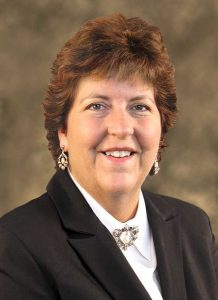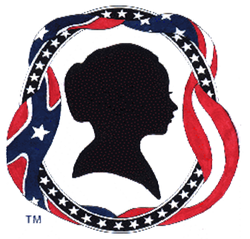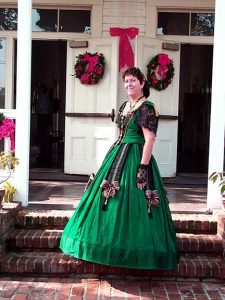“Dedicated to the Study of Women’s Roles in the Civil War” — An Interview with Janet Whaley

ECW Editor Sarah Kay Bierle had a chance to ask some questions to Janet Whaley, a board Member at the Society for Women and The Civil War. We’re pleased to share their conversation.
Q: Can you tell us a little about Society for Women and the Civil War? What makes this group unique from other CW history organizations?
A: In 1997 a few women got together and discussed the fact that women interested in the Civil War had lots of documentation and knowledge, but few ways to express that information other than to write a book. So they got together and decided to use a conference format to do that. This was the beginning of the Society, which was then called Conference for Women in the Civil War.
In 2010 we reorganized into a membership organization and became the Society for Women and the Civil War. Our mission has always been to provide Civil War historians a platform to provide information on women’s roles during the American Civil War to today’s audiences.
The Society for Women and the Civil War (www.swcw.org) is dedicated to recognizing the efforts of women who lived through or participated in the American Civil War and those who research, reenact or otherwise honor these women of the past. While our aim is focused on shining a light on women’s involvement, it also highlights the contributions of all civilians, including men and children. We also delve more into the micro history of the women we study, rather than the cultural history.
Q: Can guys join too, or is it women only?
A: Our diverse membership is not limited to women; it does include men and young adults. In fact, we have two male members on our Board of Directors, and one of our geographical Regents is male. About 25% of our membership is male. Many of our male members are women’s historians in their own right, researching and reporting on their lives. We certainly welcome and encourage male participation in the organization.

Q: What are some SWCW’s achievements or bragging rights?
Our biggest achievement is being able to form an organization dedicated to the study of women’s roles in the Civil War. When the founders of this organization put this together in 1997, scholarship on women’s participation in the Civil War was just coming to the forefront. Being able to form and sustain an organization that sponsors research and publication of original work on women’s issues is an accomplishment. We have an active Regents program, which helps our national organization connect with its members locally.
However, we didn’t stop there. In addition to sponsoring an annual conference, a monthly newsletter (The Calling Card), and a regular journal (At Home and In the Field), we have a forum for exchange of research information and a list of published authors associated with the SWCW (http://www.swcw.org/authors-list.html). We also sponsor an independently funded scholarship program recognizing high school and college students studying in this field.
Our newest effort, which is being rolled out this year, is one of our most ambitious endeavors. The National Registry of Women’s Service in the Civil War is the brainchild of several of our members. They have worked hard to compile approximately 1,500 names in this database, complete with folders containing documents of supporting data. Another 1,000 additional persons have been identified and await entry. This total represents approximately one third of the number whom we expect served in a verifiable capacity during the Civil War as nurses, soldiers’ aid society workers, female soldiers, civilians, and those involved in the US Sanitary Commission and US Christian Commission. When completed, we hope this will serve as an invaluable aid to researching and highlighting the achievements of these women.
Q: SWCW hosts an annual conference every summer. How long has this been a tradition?
A: This year will be our 20th conference. We started with the first conference in 1997; and with a few exceptions, have held it annually. It is usually held on the fourth weekend in July so that educators have a better chance to attend.
Q: So…when and where is the 2019 Conference and what’s the topic?
A: The conference this year will be held July 26-28. It has been held in various locations (Washington DC, Richmond, Nashville, Pittsburgh). We usually try to tie in the location with a college or university; and have been particularly lucky to have highlighted some smaller, historically female institutions. Sweet Briar College in Virginia; Wilson College in Pennsylvania; Hood College in Maryland; Belmont University in Tennessee – these are just a few of the schools which have hosted our conferences. This gives our attendees the extra plus of seeing and exploring some of these historic campuses. There is usually a theme of study for the conference as well, with the speakers’ presentations and field trips tying in with that theme.
This year historic Williamsburg, VA will be our conference location, hosted at the College of William and Mary; and the theme is “Women of the Peninsula.” In addition to field trips to Jamestown, Yorktown, and the James River plantations, this conference will also feature a dinner at a colonial tavern in historic Williamsburg. You can find out more information on the line-up of speakers and activities, as well as conference registration information at http://www.swcw.org/2019-conference-details.html.
Your readers will be pleased to see our list of speakers also includes the managing editor of the Emerging Civil War Blog, Sarah Kay Bierle, speaking on Arabella Barlow: “Serene and Self-Possessed” While Pushing Traditional Feminine Cultural Boundaries.

Q: What started your interest in the Civil War and women’s studies?
A: I’ve always been interested in history and concentrated on the Civil War in the 1980’s when my father showed me the original discharge papers from my GG-grandfather, Elias Whaley, who served in the 11th Indiana Zouaves. Knowing about that family connection made me want to study the Civil War through his experiences. I joined my local Pasadena Civil War Round Table wanting to learn more. Over the course of 15 years, I got the chance to visit each of the battlefields where he served, some of which no longer exist. The highlights were getting to walk down the country road where he would have marched on the way to the Shiloh battlefield; and getting to stand in the trenches where the 11th Indiana fought at Vicksburg.
Over that 15-year quest, I was exposed to and became interested in the roles that women played in this conflict, both in the armies and on the home-front. I wanted to take the knowledge I had accumulated and be able to share that in some way. That’s when I turned to living history and for 12 years worked with female reenacting units that interpreted the role of the U.S. Sanitary Commission and the American Anti-Slavery Society. Both of these experiences highlighted the significant contributions of women during the War and helped to educate the public on that important part of our country’s history.
Q: Janet, you live in California and also serve on SWCW’s board. Can you share the story of how you became involved with this remarkable group?
A: I was lucky enough to hear about the Conference on Women in the Civil War in 1999 and attended that year’s conference in Winchester, VA. Over the years, I’ve been able to attend all but four of the 20 conferences. I was always impressed with the scholarship imparted and had made friends with the like-minded attendees over the years. Because the organization’s Board members lived and met on the East Coast, I never thought I could be involved as more than a conference attendee. A few years ago, the Board expanded their geographical diversity, and started holding their Board meetings via conference call. I was asked to join the Board of Directors and have happily served since 2017.
I find that I can take my conference experience to help improve our offerings, as well as my non-profit and business experience to help improve our organizational operations. Our Board is comprised of ten individuals who have a commitment to make this women’s history scholarship available and accessible to the public. I’ve always felt that the West Coast suffers in comparison to the wealth of conference opportunities offered on the East Coast. I’d love to see an expansion of these kinds of forums to locations west of the Mississippi.
At Emerging Civil War, we like to play “rapid fire five” which is five short answer questions to learn more about a new friend. If you want to play, here goes:
Q: Favorite person from the Civil War era?
A: Fanny Kemble – actress, author, plantation mistress, divorcee – what an interesting life she had.
Q: Most overrated person from the Civil War era?
A: General George McClellan
Q: Favorite Civil War unit?
A: Well, that would have to be the 11th Indiana Zouaves.
Q: Favorite battlefield or historic site to visit?
A: The Drum Barracks Civil War Museum in Wilmington, CA. I’ve served as a docent there; and it’s our piece of California’s Civil War history.
Q: The Civil War book you “cannot live without”?
A: “Mary Todd Lincoln: A Biography” by Jean H. Baker – it really brings her personality to life.
Janet, thank you for taking the time to share about the Society for Women and The Civil War, the upcoming conference in July (just the weekend before ECW’s Symposium!), and your historical interests. It’s been a pleasure to get better acquainted, and I’m sure our readers at ECW will find the Society’s goals and efforts remarkable and noteworthy.
I am starting a fictionalized novel about another incredible role women played in the civil war – saving George Washington’s estate Mount Vernon – a national treasure. I wonder if you have any information about that fascinating moment in civil war history? I would appreciate any information or guidance you might have on this topic. Thanks! Anne Holloway
Dear Anne:
I’d be happy to pose your question to our SWCW Board to see if we might be able to provide any suggestions. If you would please send an e-mail to us at SWCW1865@gmail.com, we can communicate with you directly.
Thanks,
Janet Whaley
Per my original post here, I have completed my historical fiction novel – 60,000 words – that tells the true story of Sarah Tracy, a northerner, and Upton Herbert, a southerner who – along with a few formerly enslaved men and women – saved George Washington’s Mount Vernon from ruin during the Civil War. Sarah, together with the estate’s caretaker, Upton Herbert, form a mighty bond despite their regional differences and this bond only grows stronger resulting in a poignant romance that lasted until their deaths.
This compelling, little-known tale reveals how this disparate band of guardians courageously protected our national treasure during the darkest time in our country’s history. Sarah Tracy is at the heart of this story of heroic preservation. An unlikely heroine, standing just over five feet tall, Sarah is a giant when it comes to her mission of safeguarding the estate for future generations of Americans.
When we meet Sarah she is preparing to open the newly acquired Mount Vernon to the public for the first time. Although it is a joyous event, Sarah could not know that only months later the future of the estate would be in dire jeopardy as the Civil War raged just steps from its door. Protecting this national treasure from destruction would require tense negotiations with generals on both sides of the conflict and would end up sending Sarah on a dangerous mission into the nation’s capital to meet with President Lincoln himself. Sarah even smuggled monies dedicated to the estate out of a local bank in an egg basket when they were in peril from being seized by Union soldiers.
Sarah stood up to deserters, battle weary generals and the President of the United States to protect and preserve this national icon. Sarah’s indomitable spirit, and her untiring dedication to the cause, ensured this beloved symbol of unity and democracy lives on today for the over 85 million visitors that have made the pilgrimage to the estate since she flung open the doors that day in 1860.
Sarah, together with the unlikely band of guardians, braved bloody fighting, deprivation and illness and almost insurmountable odds to protect and preserve our country’s beloved icon. Theirs is a powerful story of how perseverance and collaboration can triumph over divisiveness and hatred – and it serves to remind us of our resilience as a nation.
I am wondering if you might be interested in this novel or perhaps know a publisher that might be? You may reach me at the email I have provided. Thanks – Anne Holloway (annepholloway@gmail.com)